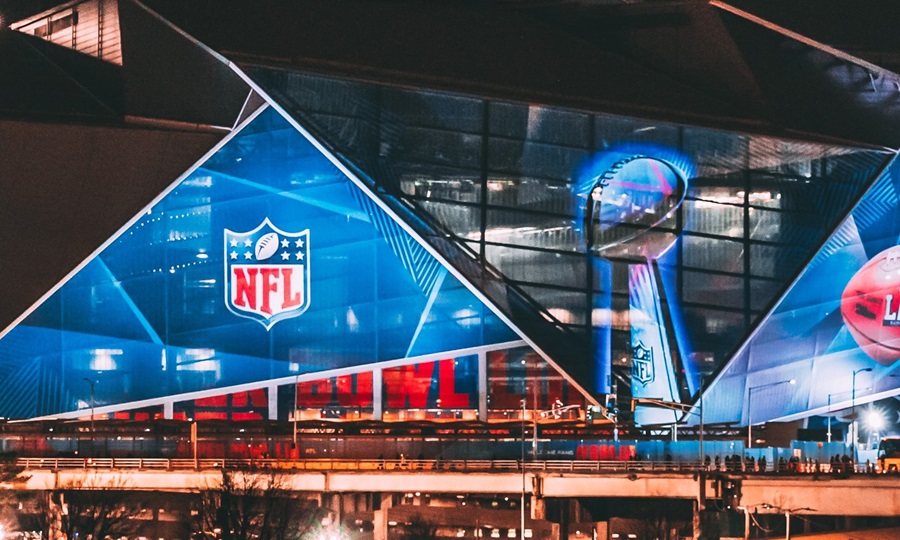Is it the right time to invest in Super Bowl advertising? Inflation nearly doubled in 2022, leading to brands and consumers to tighten their purse strings to counter the cost-of-living crisis. Despite this, many brands continued to see significant growth in 2022, as seen in the Kantar BrandZ Most Valuable Brands rankings. With growth continuity discernible, advertising remains crucial. With a combined brand value of over $8.7 trillion across the top 100 of the world’s biggest brands and these brands continuing to spend on consumer ads - the importance of advertising during these times of economic uncertainty is evident.
The Super Bowl is one of the world’s biggest advertising events, so what can we learn about the advantages of advertising?
How much is spent by Super Bowl advertisers?
Media and entertainment is now a multi-trillion-dollar industry, reaping the benefits of investment in internet connectivity, improved technology and an insatiable desire for on-screen content. Despite the decline over the past few years in how many hours consumers spend in front of the TV, the Super Bowl continues to be the world’s single premier sporting event, but moreover the biggest advertising events. So, how much is spent by Super Bowl advertisers?
- In 2021, watching commercials surpassed the half-time show in terms of popularity, and reached a combined ad revenue of nearly $435 million.
- In 2022, a Super Bowl commercial cost upwards of $7 million for a 30 second ad, an increase of almost $1 million on 2021.
- Commercial slots for 2023 have reportedly sold for north of $7 million, highlighting another increase on the previous year.
Despite the incredibly high cost, brands still want to invest in the slots. With six months still to go, in September 2022, Fox neared sell out for Super Bowl 2023 commercial inventory. This was one of the quickest sell-outs in the history of the event.
What are the advantages of advertising during the Super Bowl?
- Viewership figures are extraordinary.
In 2022, the game was available on NBC, Telemundo, Peacock, NBC Sports Digital, NFL Digital and Yahoo! Sports mobile properties. The combined viewership figures are estimated at over 208 million, compared to 25 million for the 2022 World Cup final. With people all over the world able to stream and tune in to watch the Super Bowl, the sheer volume of viewers is one of the biggest advantages of advertising during the Super Bowl.
- The Super Bowl offers an engaged audience.
Being able to reach a high number of viewers is only half the story. The benefits of advertising only really come to fruition if those viewers watch the commercials. Generally, the ads created for the Super Bowl have a storyline, showcase celebrities, and can be funnier and more entertaining than standard TV ads, which means they have an extremely captive audience. According to Kantar’s Creative Guardrails report, one Super Bowl ad is over 20x more effective than a regular television ad.
- The best Super Bowl ads raise brand awareness.
Brand awareness is the foundation of building a successful brand. Not only does it increase the chances of getting new customers, but it also improves the numbers of return customers too. Being a part of the Super Bowl commercial inventory for many brands is an opportunity to build brand awareness and recall, in addition to raising sales figures. Last year, Super Bowl ads delivered an average ROI of $4.6 per dollar spent with many ads in the triple digits.
What can the best Super Bowl ads tell us about brands?
The pricey Super Bowl commercial cost shows that in spite of the economic downturn and cost-of-living crisis, many brands still have a healthy budget available to them. Aside from showing us they have cash to invest, what can these ads tell us about the Super Bowl advertisers?
- Purposeful brands – with messages on social or environmental causes and feelings. They use this to pull in the punters by tugging on the heartstrings or to generate awareness for the causes they support. P&G’s #LikeAGirl campaign transformed what is typically an insult into an emotional confidence statement, while staying true to core brand messaging.
- Current brands – Shouting about current events in the modern world. Whether it’s Budweiser barely featuring their actual product to focus on the strong, resilient American spirit in a post-pandemic world; or Olay choosing to focus on encouraging women into STEM, these ads work to increase a brand’s likeability.
- Story-telling brand – Using savvy advertising techniques to increase brand awareness. Building up the suspense and teasing consumers with early snapshots, such as PopCorner’s latest push with Bryan Cranston, and additional advertising prior to the Super Bowl is one way that some brands have generated extra coverage and built their brand awareness successfully.
The decision to join the ranks of the many brands who have chosen to become Super Bowl advertisers is not one to be taken lightly. However, as we have shown, despite the fact that some of the world’s biggest brands have had a mix of success and failure with their Super Bowl ads, the fact remains that while spending big can be a gamble, when it pays off, it can pay off big.


